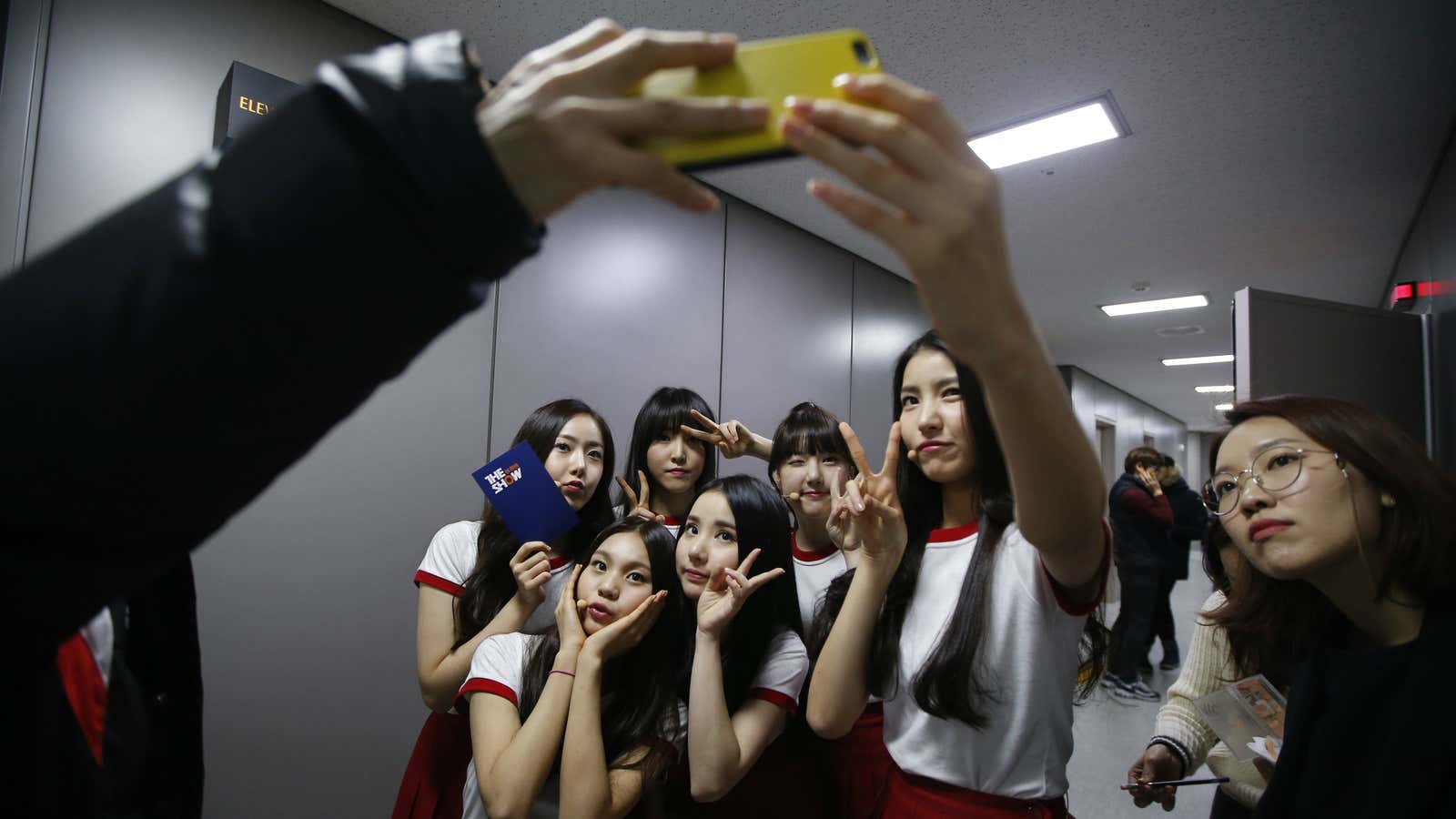The internet mob loves nothing more than a hefty serving of schadenfreude. And that is what they got recently, with the case of 22 year old British influencer Elle Darby.
Darby—who has more than 96,000 YouTube subscribers and 88,000 Instagram followers—reached out to Dublin-based hotel and restaurant owner Paul Stenson, asking for a four night stay in his hotel in exchange for video and social content. An irate Stenson responded by posting her email on social media—along with a scathing caption criticizing her for being entitled and for lacking “self-respect and dignity.”
Much of the coverage fixated on the backlash—and, of course, the backlash to the backlash—as well as the fact that Stenson was somewhat of an internet provocateur himself. (He had been involved in similarly media-inducing tirades about vegans, breastfeeding, and gluten-free diners before.) But while the internet has criticized the actions of both sides, the very public spat begs a larger question: Is the age of influencer marketing suffering a backlash? Or are travel, hotel, and hospitality brands as interested in giving away free stuff to social media personalities as they are in receiving them?
Most brands aren’t giving up on influencers, says Michaela MacIntyre, head of social media at Gravity Thinking—a London-based creative agency that helps brands craft strategy—but the relationship is getting more sophisticated. And that’s precisely where Elle Darby went wrong.
“I’m sure most people have just seen the headline and think that’s the state of the entire industry— but it’s not” MacIntyre said. “Brands and companies are still very willing to work with influencers, but [this incident] is an opportunity for us to say that influencers need to raise their game a little bit.”
While many people have criticized Darby for presumptuously asking for something for free, MacIntyre says that’s standard industry practice. It was the nature of the pitch, however, that was problematic: She asked for a four night stay rather than one or two, focused on the personal (rather than business) motivation of her Valentine’s Day visit, and offered no specific metrics or proof of engagement from her past work with brands in her email. Nor did she make the case of why Stenson’s hotel was of specific interest to her followers—or even who her followers were. In other words, as a so-called influencer, Darby didn’t do her job.
“Influencers know their audiences inside out. If their audience is not aligned with a particular travel brand, they shouldn’t take that job,” MacIntyre said. “They’re only going to hamper their own ability to work with brands in the future and they’re going to give influencer marketing a bad name.”
Harry Hugo is the co-founder of The Goat Agency, one of Europe’s leading influencer marketing agencies that has done campaigns with the likes of British Airways. He says from both brand and influencer perspective, influencer marketing is doing the opposite of contracting—it’s growing. But it’s also growing up.
“Certain hotels and restaurants now have a social media ranking list of what you can get for certain levels of followers because [they know] it is valuable.” says Hugo. “So do I think there is fatigue around this? No—I think it’s coming into its prime. But I think as brands are really realizing its value, they are making better choices.”
MacIntyre also adds that as the influencer space becomes more saturated—and clogs up more and more newsfeeds—there needs to be more nuance and understanding around what actually constitutes an “influencer.” Otherwise consumers will simply tune out at mention of the word.
To that end, MacIntyre has created an influencer taxonomy, with conventional celebrities with large followings like Chrissy Teigen (15.7 million Instagram followers) or Justin Bieber (96.3 million Instagram followers) listed at top. That’s followed by “creators,” or those famous for being on social, such as PewDiePie (over 60 million YouTube subscribers), Casey Neistat (nearly 8.8 million YouTube subscribers), or Kayla Itsines (8.6 million Instagram followers). Next comes “champions,” or someone with between 500,000 and a million followers on their platform of choice, who is trying to scale up to the creator level. And then the “enthusiast”—which is where MacIntyre would place Darby—or someone who isn’t necessarily specializing in any one thing, and is still building a value for brands.
She says the brands that are mastering influencer marketing are the ones that aren’t going for the low hanging fruit, or just basing their choice on high numbers—but rather “thinking about the passion points of their target audience and trying to tap into influencers who speak to those.” After all, despite all her followers, “Kim Kardashian’s conversion rate is worse than a banner ad,” as MacIntyre has formerly noted. In other words: Partnering with an influencer who has the biggest numbers don’t always mean a big return for brands.
While Elle Darby may have been tried in the brutal court of internet opinion, in truth her crime wasn’t being an influencer asking for a free hotel stay—it was a failure to do her homework and understand how the industry has progressed. As MacIntyre put it: “She got the wrong person, on the wrong day, and approached them in the wrong way.”
